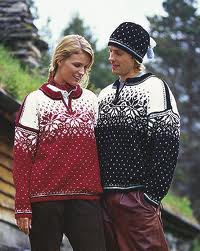Branding: Why Do They Buy?
When I lived in Stockholm, I was responsible for customers throughout Scandinavia. One of my favorite customers was Dale of Norway, the creators of richly patterned, thick wool sweaters. The sweaters are very popular with winter sport enthusiasts in my home state of Colorado. They’re stylish and they’re practical … and therein lies a tale.
I visited Dale of Norway’s headquarters and met their CEO. The company is located in a picturesque little town called Dale. (We call it Dale as in Chip and Dale but the Norwegians pronounce it Darla). When I met the CEO I mentioned that I was from Colorado and that my wife and I were both customers. The conversation went something like this:
CEO: “Let me guess. You have one sweater and your wife has three.”
Me (surprised): “Yes. How did you know?”
CEO: “Women see our sweaters as fashion statements and they’re willing to buy more than one. Men see them as a high quality product that will last a life time. If it will last a life time, why would you ever buy more than one?”
Me: “I wish I understood my customers as well as you understand yours.”
There are a couple of lessons here. First, sometimes a satisfied customer is just that: satisfied. I was a very satisfied Dale of Norway customer. If you did a customer satisfaction survey, I would be right at the top. But I was generating exactly zero revenue for the company.
One of Dale of Norway’s challenges was to overcome the satisfied customer curse. They needed to give me (and even my wife) more reasons to buy. To complement their heavy weight sweaters, they introduced two new product lines — mid-weight sweaters and lighter weight accessories. I’m now the proud owner of a mid-weight sweater and some long underwear. I’m still satisfied but, more importantly, I’ve generated new revenues for Dale of Norway.
The second lesson: different people buy for different reasons. Don’t ever assume that what’s sauce for the goose is sauce for the gander. To the maximum extent possible, live with your customers. When you see the world through their eyes, you’ll find that different groups see your product differently. There’s nothing surprising in that — it’s just segment marketing. Unless you understand how each segment thinks, you’ll never communicate effectively with them. One message does not fit all.
The third lesson? Dale of Norway makes great sweaters, gloves, mittens, and scarves. So get out there and buy one … or two … or three. You can find them here.

